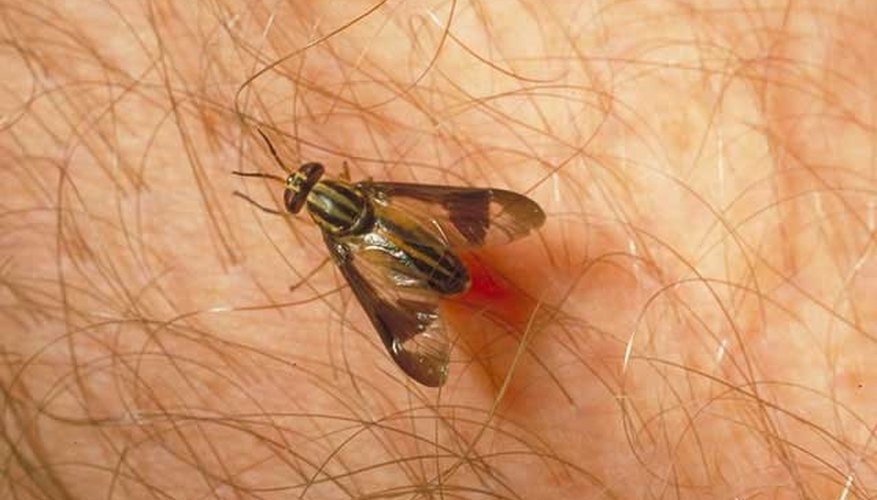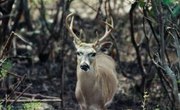
Deer flies aren't a simple annoyance like their house fly cousins. Deer flies are painful biters that attack humans four or five at a time: their bites knife through the skin, and when done feeding, they can leave a bleeding wound as a calling card. And though their is no foolproof way to repel these vicious creatures, their presence can be reduced significantly through a variety of methods.
Learn when and where to expect a flurry of deer flies. Deer flies prefer warm, sunny days with little or no wind, especially around beaches, streams and the edges of wooded areas. And when on the attack, deer flies prefer to go for the face and neck. The good news is deer fly season lasts only for four or five weeks in June and July, and their activity can be reduced by slight drops in temperature or a steady breeze.
Protect vulnerable areas with DEET-based repellents, such as Off, which maintain their effectiveness for a few hours (DEET is short for N,N-Diethyl-meta-toluamide and is the most common active ingredient in insect repellents). Apply DEET-based repellents sparingly, as human allergies can develop with excessive use. Permethrin-based repellents, on the other hands, are applied to clothing instead of the skin and last for longer periods.
Consider affixing a deer fly patch to a piece of clothing around your head or neck, like onto the back of a hat. Deer fly patches are generally several square inches in size, are odorless and adhesive and capture and immobilize biting deer flies instead of merely repelling them. These patches work best when you are hiking, walking or while otherwise on the move.
Dress accordingly. Nylon head nets are available that keep insects away from the face and neck, which just so happen to be the parts of the body that attract deer flies the most. Mesh Bug-Off jackets, meanwhile, can be worn over regular clothing for added protection. And light-colored clothing, such as khaki, appear to attract deer flies less than darker colors.
Treat your local area with repellents like citronella or naphthalene. These repellents are best applied during the day, when deer flies are most active. Insecticides containing pyrethrins, resmethrin or permethrin may also be used to treat local shrubbery and vegetation, although these treatments only provide a few days of protection before the area is reinfested by deer flies from surrounding areas. Do not, at any time, apply insecticides directly to bodies of water.
Have patience. These pests should disappear after a few weeks.
Writer Bio
This article was written by the CareerTrend team, copy edited and fact checked through a multi-point auditing system, in efforts to ensure our readers only receive the best information. To submit your questions or ideas, or to simply learn more about CareerTrend, contact us [here](http://careertrend.com/about-us).


